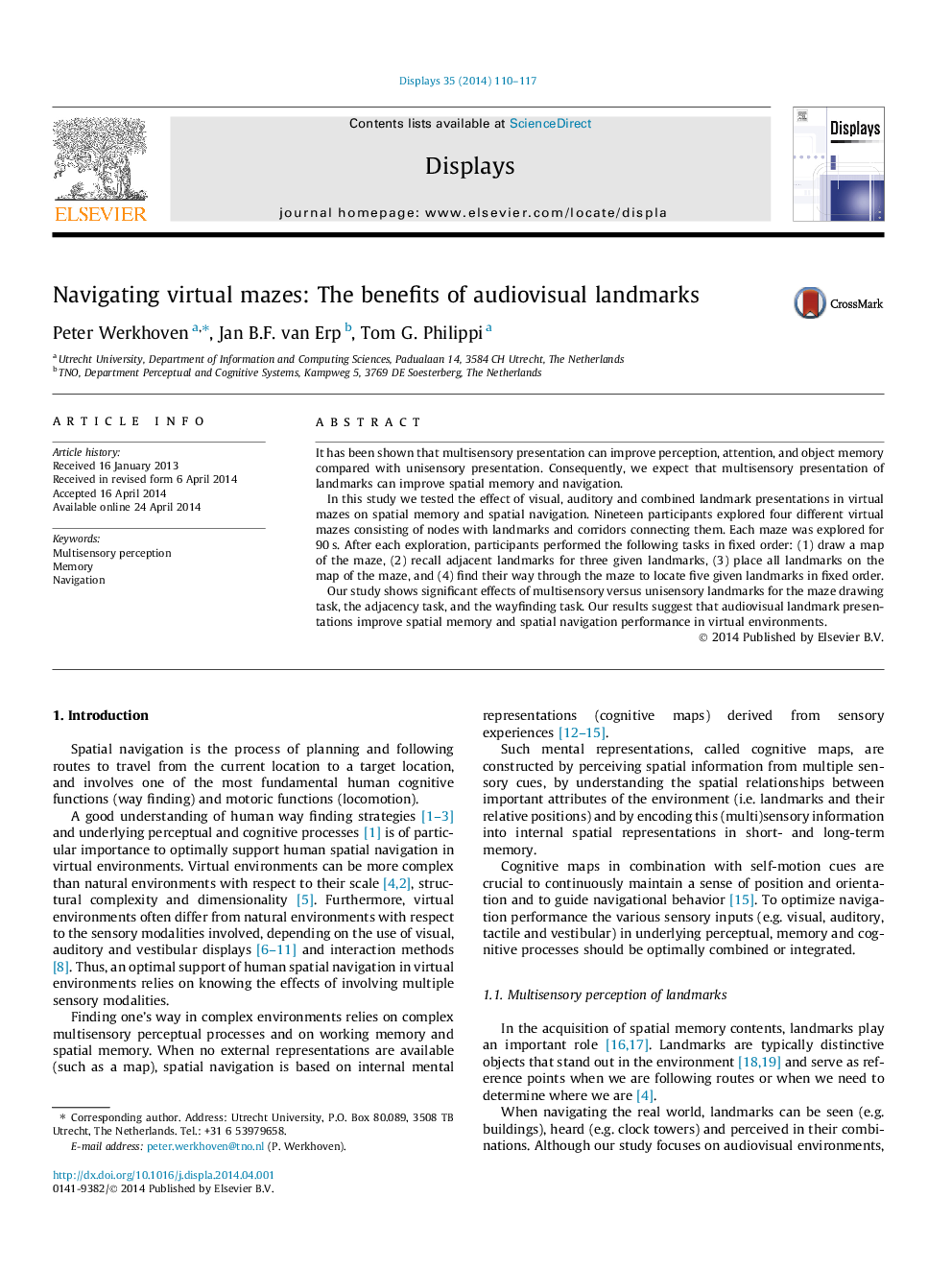| Article ID | Journal | Published Year | Pages | File Type |
|---|---|---|---|---|
| 537880 | Displays | 2014 | 8 Pages |
•We compare navigating virtual mazes with visual, auditory and combined landmarks.•We examine changes in spatial memory tasks and way finding performance.•Audiovisual landmark presentation yields the best performance for map drawing, landmark recollection and wayfinding.
It has been shown that multisensory presentation can improve perception, attention, and object memory compared with unisensory presentation. Consequently, we expect that multisensory presentation of landmarks can improve spatial memory and navigation.In this study we tested the effect of visual, auditory and combined landmark presentations in virtual mazes on spatial memory and spatial navigation. Nineteen participants explored four different virtual mazes consisting of nodes with landmarks and corridors connecting them. Each maze was explored for 90 s. After each exploration, participants performed the following tasks in fixed order: (1) draw a map of the maze, (2) recall adjacent landmarks for three given landmarks, (3) place all landmarks on the map of the maze, and (4) find their way through the maze to locate five given landmarks in fixed order.Our study shows significant effects of multisensory versus unisensory landmarks for the maze drawing task, the adjacency task, and the wayfinding task. Our results suggest that audiovisual landmark presentations improve spatial memory and spatial navigation performance in virtual environments.
